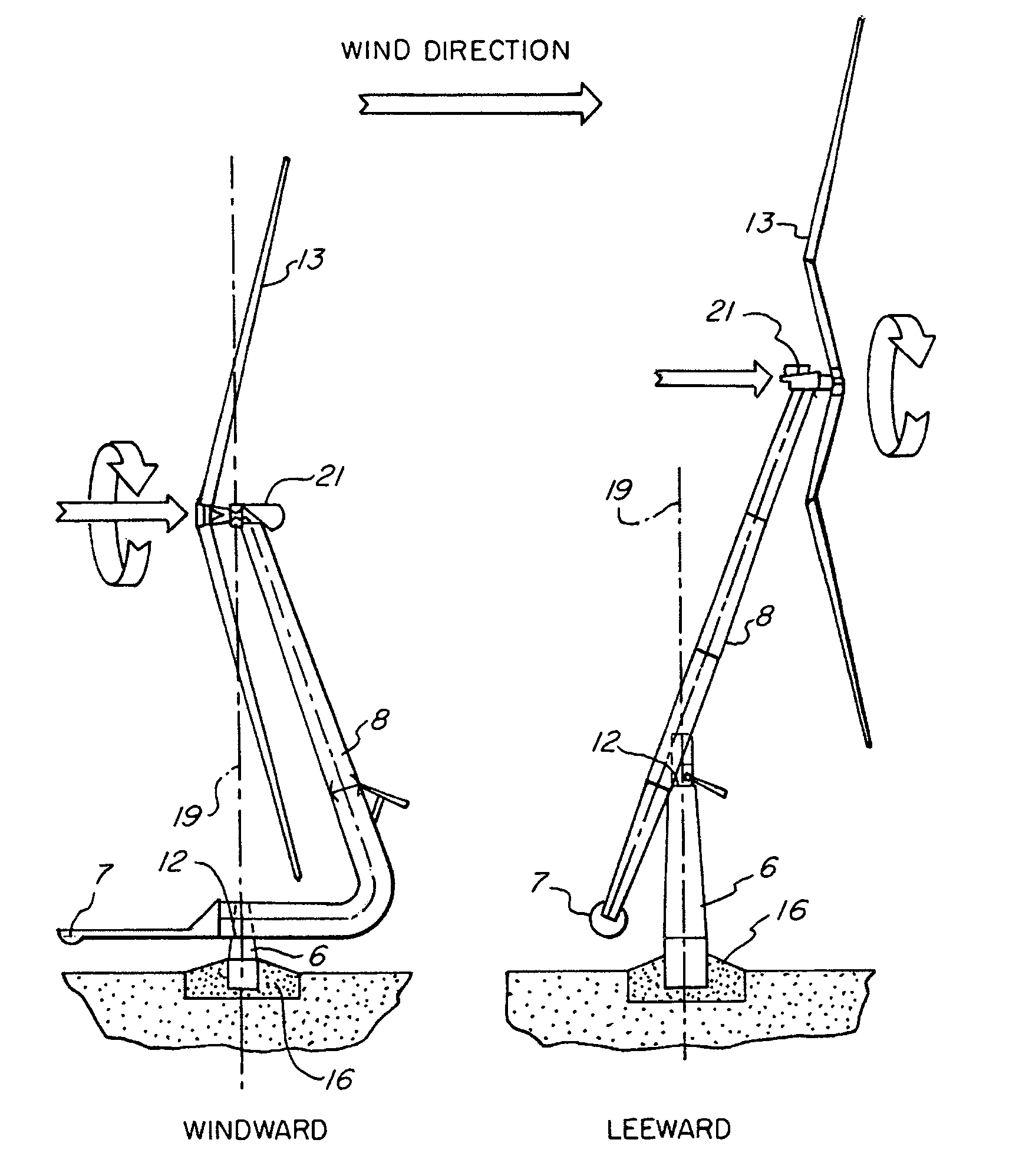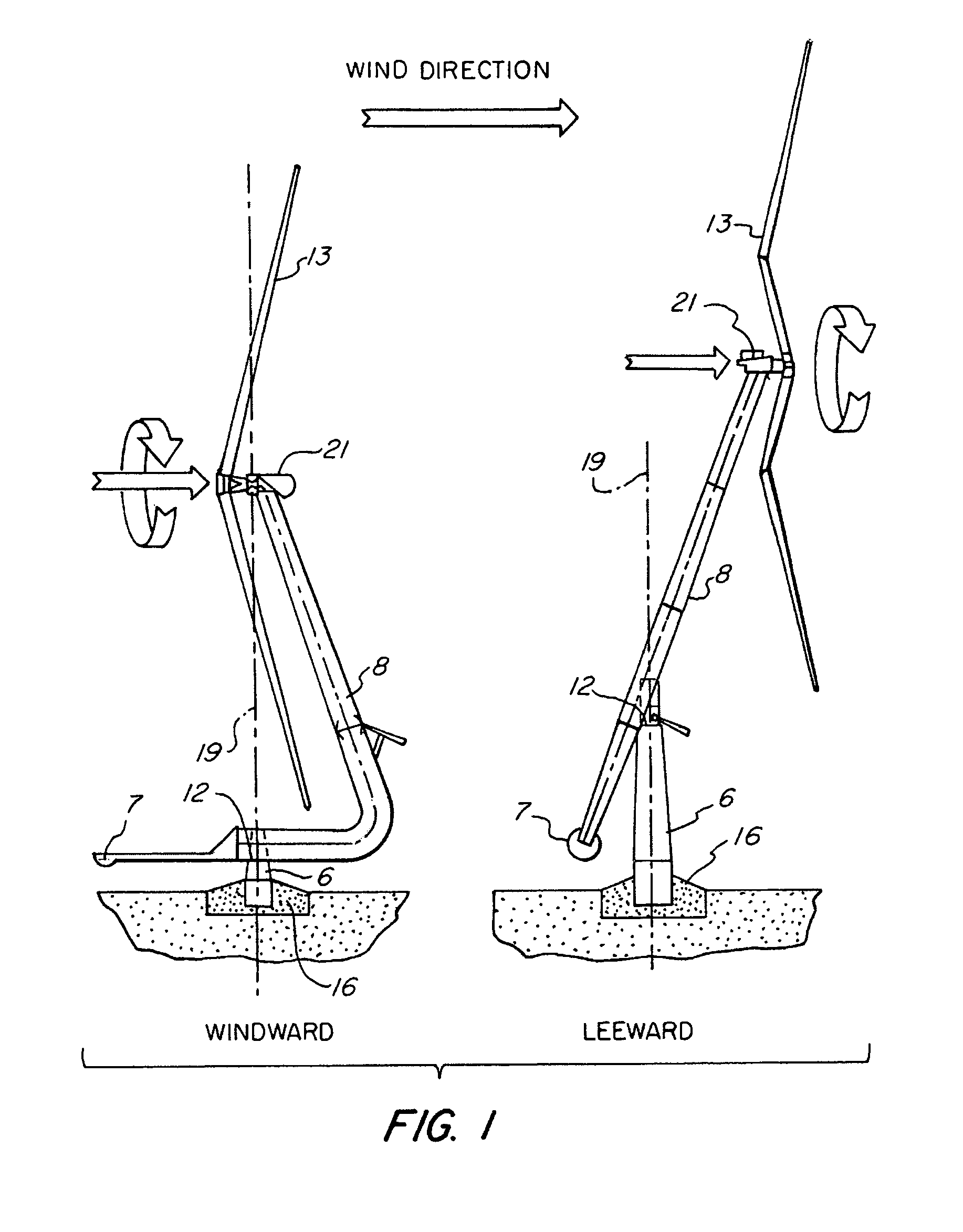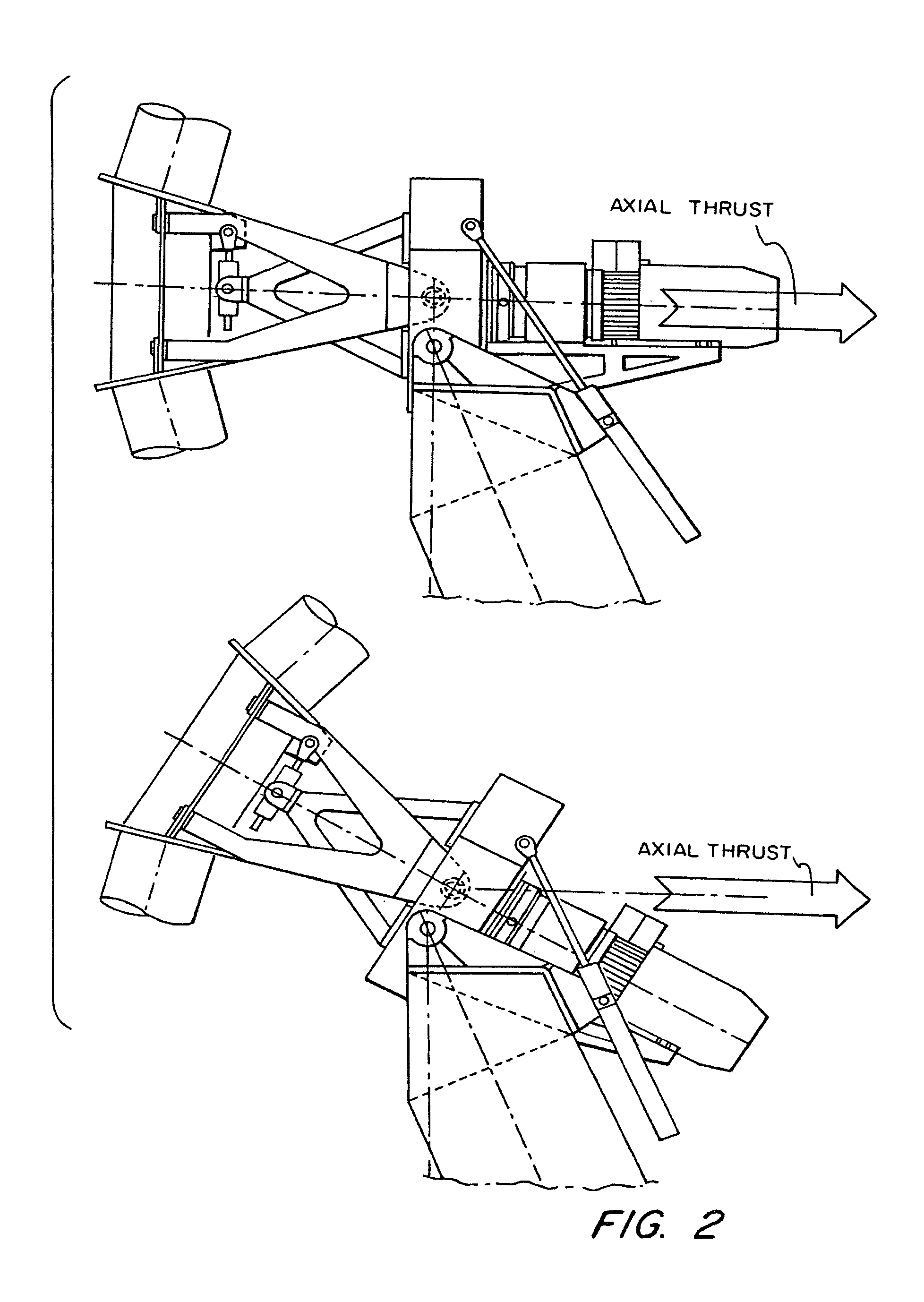Self-guiding wind turbine
a self-guiding, wind turbine technology, applied in the direction of propellers, propulsive elements, water-acting propulsive elements, etc., can solve the problems of low-power air-pump, inconvenience of assembly and maintenance, and effect on the whole structure, so as to eliminate the effect of gyroscopic effects
- Summary
- Abstract
- Description
- Claims
- Application Information
AI Technical Summary
Benefits of technology
Problems solved by technology
Method used
Image
Examples
Embodiment Construction
[0036]Referring to FIGS. 1–8, in the present invention, we are attempting to use wind energy with simpler turbines than the classical turbines currently on the market, putting forward a self-guiding design that confers complete freedom when it comes to positioning itself in the direction of the wind, taking better advantage of the incidental current energy, whose force is used not only to capture power but also to protect it, avoiding the necessity to overcome forces and moments superior to those calculated. The design of said self-guiding structure, formed of two reinforced parallel girders positioned on their side in the form of a “grating”, has a section protruding less in the head-on direction of the wind (machine in position), allowing the wind to pass through, encountering less resistance and simultaneously reducing the shadow effect on the blade and making it self-guiding given that its center of thrust is moved sideways with respect to the rotation axis of the column it is s...
PUM
 Login to View More
Login to View More Abstract
Description
Claims
Application Information
 Login to View More
Login to View More - R&D
- Intellectual Property
- Life Sciences
- Materials
- Tech Scout
- Unparalleled Data Quality
- Higher Quality Content
- 60% Fewer Hallucinations
Browse by: Latest US Patents, China's latest patents, Technical Efficacy Thesaurus, Application Domain, Technology Topic, Popular Technical Reports.
© 2025 PatSnap. All rights reserved.Legal|Privacy policy|Modern Slavery Act Transparency Statement|Sitemap|About US| Contact US: help@patsnap.com



